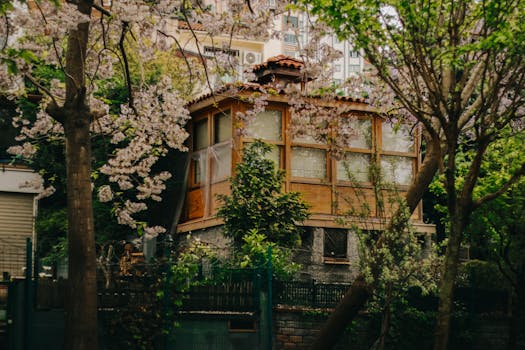
Urban Green Spaces: The Future of Outdoor Living in European Cities by 2025
Urban Green Spaces are becoming increasingly important in European cities, and for good reason. As the Focus Keyword: Urban Green Spaces continues to grow, it’s essential to understand the role they will play in shaping the future of outdoor living in European cities by 2025.
Introduction to Urban Green Spaces
Urban Green Spaces refer to areas in urban environments that are dedicated to green infrastructure, such as parks, gardens, and green roofs. These spaces provide a range of benefits, including improved air quality, reduced noise pollution, and increased biodiversity.
Benefits of Urban Green Spaces
The benefits of urban green spaces are numerous. They provide a space for recreation and relaxation, improve mental health and well-being, and support local wildlife. Additionally, urban green spaces can help to mitigate the urban heat island effect, reduce stormwater runoff, and improve air quality.
European Cities and Urban Green Spaces
European cities are at the forefront of urban green space development. Cities such as Copenhagen, Stockholm, and Amsterdam are leading the way in incorporating green infrastructure into their urban planning. These cities recognize the importance of urban green spaces in creating sustainable, livable, and resilient cities.
The Future of Outdoor Living in European Cities
By 2025, urban green spaces will play a critical role in shaping the future of outdoor living in European cities. As cities continue to grow and urbanize, the need for green spaces will become increasingly important. Urban green spaces will provide a range of benefits, from improved air quality to increased biodiversity, and will be essential in creating sustainable and livable cities.
Conclusion
In conclusion, urban green spaces are the future of outdoor living in European cities by 2025. As cities continue to grow and urbanize, the need for green spaces will become increasingly important. By incorporating urban green spaces into urban planning, cities can create sustainable, livable, and resilient cities that provide a high quality of life for their citizens.
What Can You Do to Support Urban Green Spaces?
There are many ways to support urban green spaces, from volunteering in local parks to advocating for green infrastructure in your community. By working together, we can create a future where urban green spaces are a integral part of every city.
Get Involved in Your Community
Getting involved in your community is a great way to support urban green spaces. Join a local park group, participate in a community garden, or attend a city council meeting to advocate for green infrastructure.
Support Sustainable Urban Planning
Supporting sustainable urban planning is essential in creating cities that prioritize green infrastructure. Encourage your city leaders to incorporate green spaces into urban planning and support initiatives that promote sustainability.
Make a Difference in Your Own Backyard
Making a difference in your own backyard is a great way to support urban green spaces. Plant a tree, start a garden, or install a green roof to contribute to the growth of urban green spaces in your community.
Conclusion
In conclusion, urban green spaces are the future of outdoor living in European cities by 2025. By working together, we can create a future where urban green spaces are a integral part of every city, providing a range of benefits for both people and the environment.
Final Thoughts
As we look to the future, it’s essential to prioritize urban green spaces in European cities. By doing so, we can create sustainable, livable, and resilient cities that provide a high quality of life for their citizens. Let’s work together to make urban green spaces a reality in every city.
Call to Action
Join the movement to create more urban green spaces in European cities. Share this article with your friends and family, and let’s work together to make a difference in our communities.
Additional Resources
For more information on urban green spaces, check out the following resources:
- European Union: Urban Green Infrastructure
- World Health Organization: Urban Green Spaces and Health
- United Nations: Sustainable Urban Development
Conclusion
In conclusion, urban green spaces are the future of outdoor living in European cities by 2025. Let’s work together to create a future where urban green spaces are a integral part of every city, providing a range of benefits for both people and the environment.
Final Thoughts
As we look to the future, it’s essential to prioritize urban green spaces in European cities. By doing so, we can create sustainable, livable, and resilient cities that provide a high quality of life for their citizens.
Call to Action
Join the movement to create more urban green spaces in European cities. Share this article with your friends and family, and let’s work together to make a difference in our communities.





